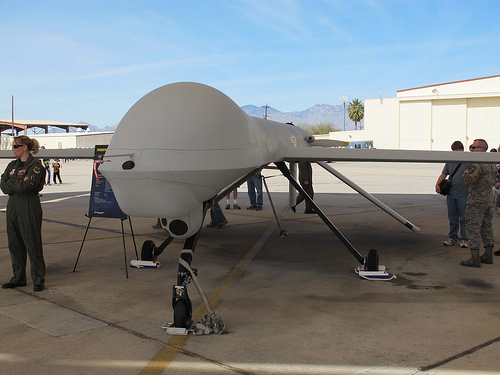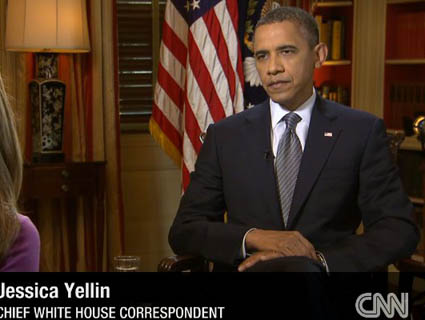On Monday night I read a couple of news articles about a new study of drone warfare in Pakistan, but I couldn’t find the report itself, which was apparently still embargoed at the time. For that reason I held off on blogging about it. However, Glenn Greenwald reminded me about this today, so I went looking again. And here it is. Here are the raw numbers for the total number of strikes and estimated civilian casualties:
At the time of this writing, the US is believed to have conducted 344 total strikes in Pakistan, 52 between June 17, 2004 and January 2, 2009 (under President Bush), and 292 strikes between January 23, 2009 and September 2, 2012 (under President Obama).
….The Long War Journal, a project run by the Foundation for the Defense of Democracies, claims that 138 civilians have been killed between 2006 and the present….New America Foundation’s Year of the Drone project—the most widely cited in the US of the three strike-tracking sources—currently estimates that 152 to 191 civilians have been killed by drones since 2004….TBIJ estimated that between 482 and 849 civilians have been killed by drones in Pakistan since 2004.
So the number of drone strikes has increased from about 11 per year under Bush to about 80 per year under Obama. The chart below, which I cobbled together from three pages of the report (trying to keep the scale approximately the same for all three years), shows the number of drone strikes and the minimum number of casualties they’ve caused since 2010:

It appears that drone activity has declined in 2012, although that may be an artifact of the time it takes to gather data. Aside from the raw numbers, though, Glenn draws particular attention to this passage from the report:
The US practice of striking one area multiple times, and evidence that it has killed rescuers, makes both community members and humanitarian workers afraid or unwilling to assist injured victims. Some community members shy away from gathering in groups, including important tribal dispute-resolution bodies, out of fear that they may attract the attention of drone operators. Some parents choose to keep their children home, and children injured or traumatized by strikes have dropped out of school. Waziris told our researchers that the strikes have undermined cultural and religious practices related to burial, and made family members afraid to attend funerals.
Glenn comments: “In the hierarchy of war crimes, deliberately targeting rescuers and funerals — so that aid workers are petrified to treat the wounded and family members are intimidated out of mourning their loved ones — ranks rather high, to put that mildly. Indeed, the US itself has long maintained that such ‘secondary strikes’ are a prime hallmark of some of the world’s most despised terrorist groups.”
There’s no question that fighting a counterinsurgency is hard. And it’s fundamentally different from fighting a conventional war because it’s difficult to separate militants from civilians — something that insurgents explicitly count on. But even if you accept drone strikes as a legitimate part of counterinsurgency, and even if you accept that civilian casualties are an inevitable part of that, “double tap” strikes are simply heinous. They’re also far more likely to turn the indigenous population against you, which makes them counterproductive as well as immoral. After all, it’s not as if top al-Qaeda leaders are the ones likely to be conducting rescue operations. At best, you might get a few foot soldiers but nothing more.
The most depressing part of all this is that you can’t just blame this on one guy, and hope that it might change once he’s out of office. Bush started it, and Obama has ramped it up. What’s more, there’s no partisan pushback at all. To repeat something I said last year, Republicans are in favor of anything that kills more bad guys, regardless of collateral damage, and Democrats are unwilling to make trouble for a president of their own party. Put those two things together, and drones have become stealth weapons both politically and technologically. Everybody is in favor of them.














